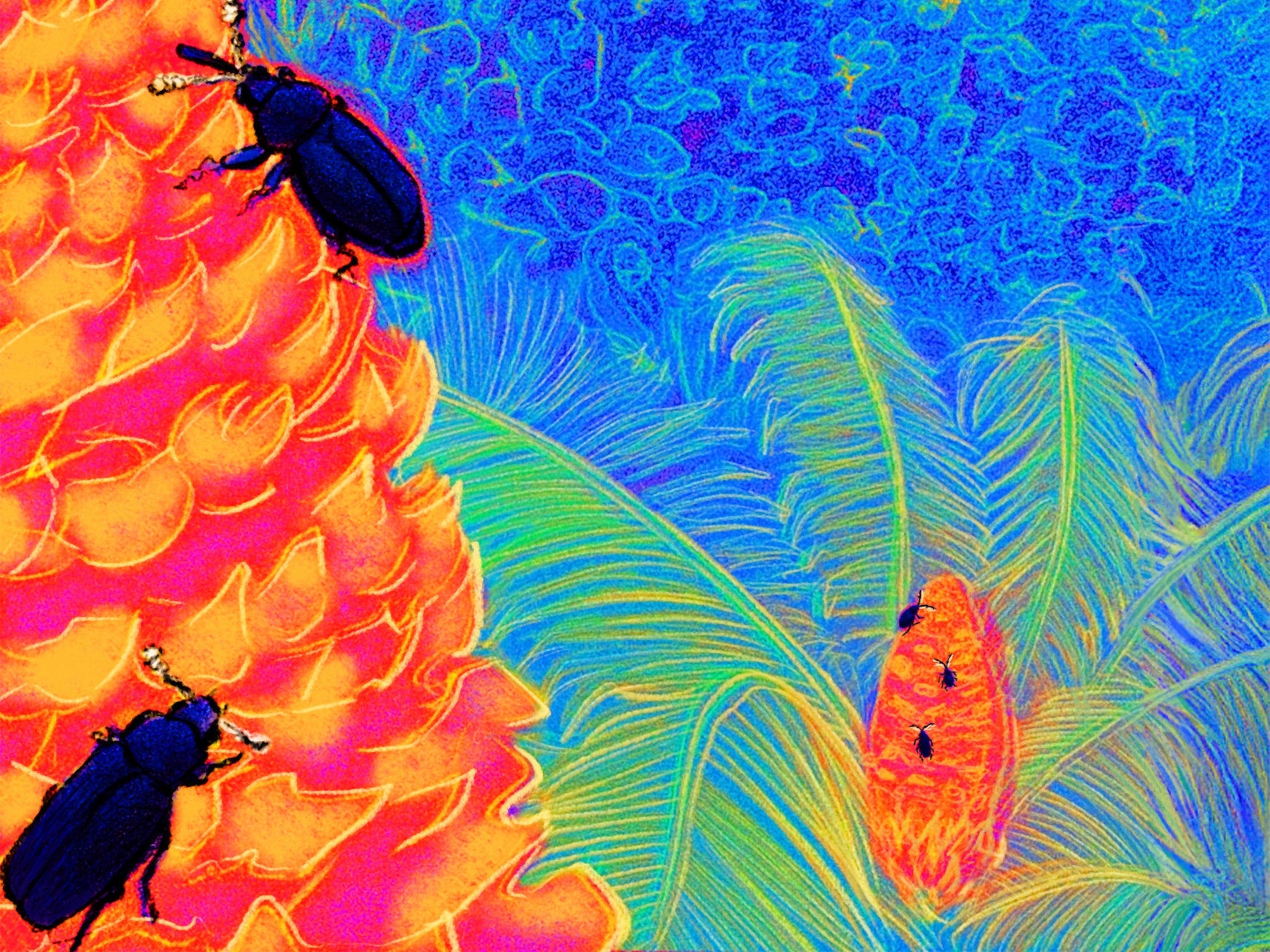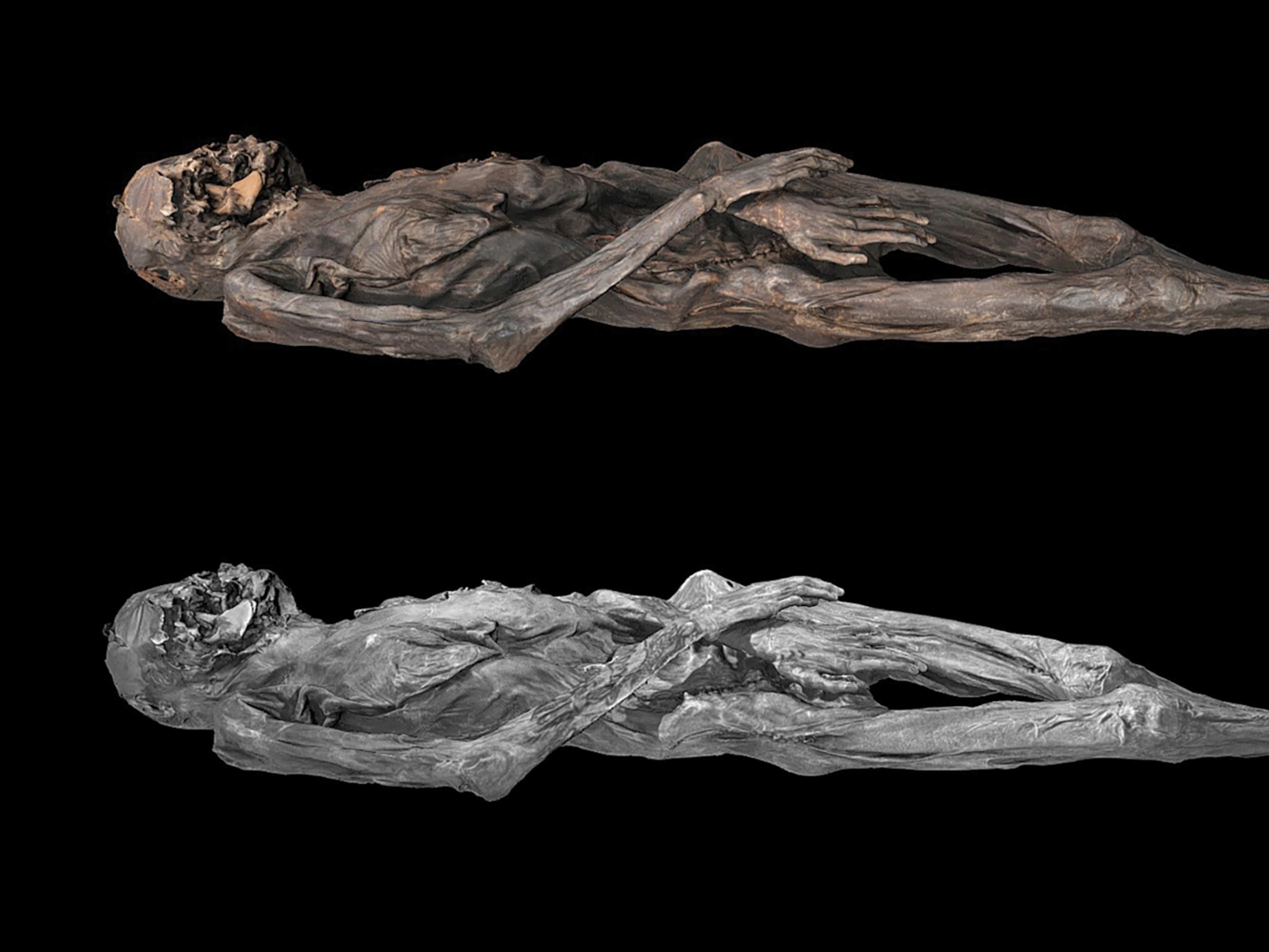How Do You Protect Endangered Animals at Night? Ask an Astrophysicist.
To covertly watch animals targeted by poachers, this team of scientists wants to send in the drones.
What do animals and galaxies have in common? Under a thermal infrared camera, they both glow.
The similarity is now helping conservationists monitor endangered animals that are often targeted by poachers. By deploying small drones with infrared cameras attached, scientists are developing tools for wildlife officials to watch these wild animals without disturbing them.
At night, when poachers are most likely to strike, wildlife guards have a difficult time spotting animals in the dark. But on infrared cameras, they're impossible to miss. On video, the landscape appears a dull pink and purple color. In contrast, animals and humans—anything that gives off a heat source—appears yellow. The warmer an object, the brighter it appears.
The interdisciplinary research team conducted a separate trial last September, during which they went to South Africa to search for Riverine rabbits. The rabbits are one of the most endangered species of mammal in the world, and only about 1,000 have been spotted ever.
Flying the drone 65 feet in the air, the researchers were able to see five rabbits on camera. (Learn more about high-tech conservation efforts.)
The drones were also tested at the Knowsley Safari and Chester Zoo near Liverpool, England. In video footage, bright yellow rhinos and elephants are easily spotted.
In addition to high-tech cameras, the system is supported by a machine learning program developed from an open-source software repository called Astropy. The software supports the camera by learning how to identify different types of animals in various landscapes.
“It's the same glow the galaxies have,” says astrophysicist Claire Burke from Liverpool John Moores University in the U.K. Burke's work has focused more on search for the thermal glow of far-off galaxies, but she adapted the software to find endangered animals.
“Once you've detected them, you can learn their thermal profile,” she adds.
Knowing an animal's unique thermal profile, the software is then able to learn how to identify various species.
Burke says this information could also be used to take accurate population counts. Current methods rely on human counting or studying the remains, like nests, that animals leave behind.
The drones could also be used in search-and-rescue operations. Its cameras would be able to see heat signatures through fog, a feat that's difficult for human eyes. Injured or sick animals could also potentially be identified when they experience a spike in temperature.
The results of the software thus far were recently presented at an annual meeting of the European Astronomical Society.
Despite its potential, the software still contains some limitations. Humidity has been noted as an issue, and warmer climates make the animals more difficult to spot. When the ground is warmer, the thermal images appear less distinct, so on camera, the animals don't pop.
The Threat From Poaching
Despite the limitations, conservationists are excited about how the technology could be used.
There's no shortage of demand for tools that can be used to stop poaching. Just a few weeks ago, Sudan, the last northern white rhino, died. Only two individuals, both females, remain of the sub-species. It was a reminder of the extent of damage poaching can have.
For the last year of his life, Sudan was under 24/7 armed guard.
Rhinos are aggressively poached. In the past year, more than 1,000 were killed by poachers, a slight drop after an explosion of illegal poaching in the past decade.
In addition to guards and sniffer dogs, parks like Kruger National Park in South Africa have searched for high-tech methods to stop poachers. Sonar and movement-detecting sensors have been installed to the tune of nearly $6 million dollars.
Once fully operational, Burke says the heat-seeking drone cameras will cost about $20,000.
This May, the team of astronomers and ecologists will look for orangutans in Malaysia and spider monkeys in Mexico before heading to Brazil to search for river dolphins.





